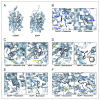Clonorchis sinensis dopamine transporter (CsDAT) facilitates dopamine uptake
- PMID: 40888015
- PMCID: PMC12400079
- DOI: 10.3347/PHD.25040
Clonorchis sinensis dopamine transporter (CsDAT) facilitates dopamine uptake
Abstract
Clonorchis sinensis is a liver fluke that causes clonorchiasis, a significant public health concern in East Asia, closely associated with hepatobiliary diseases. Dopamine is an essential neurotransmitter involved in neuromuscular signaling, and its uptake by trematodes may contribute to parasite physiology and survival. This study aimed to characterize the dopamine transporter CsDAT in C. sinensis by synthesizing cDNA from adult worms and expressing it in Xenopus laevis oocytes; subsequently, uptake assays were conducted using radiolabeled dopamine. Functional assays confirmed that CsDAT mediates dopamine uptake in a sodium-dependent manner. The uptake was saturable and exhibited Michaelis-Menten kinetics with a Michaelis constant of 454.5 nM and a maximum uptake rate of 1,422.5 fmol/oocyte/h. CsDAT efficiently transported dopamine with high affinity, indicating its physiological relevance in the parasite. A 3-dimensional model of CsDAT was constructed to examine its structural features. The predicted structure contained a conserved substrate-binding pocket similar to that of other known neurotransmitter transporters. Molecular docking simulations showed that dopamine stably fits within the binding pocket. The key amino acid residues formed hydrogen bonds and hydrophobic interactions with dopamine. Interestingly, dopamine and several inhibitors demonstrated higher binding affinity to CsDAT than the human dopamine transporter. This study provides the first functional and structural insights into CsDAT. The higher inhibitor-binding affinity of CsDAT compared to human dopamine transporter suggests its potential for use in therapeutic exploration. Targeting CsDAT may facilitate the development of new therapeutic agents against clonorchiasis with minimal off-target effects on the human nervous system.
Keywords: Clonorchis sinensis; Xenopus laevis oocyte; dopamine; dopamine transporter; solute carrier family 6 member 3; uptake.
Conflict of interest statement
Jin-Hee Han serves as an editor of Parasites, Hosts and Diseases but had no involvement in the decision to publish this article. No other potential conflicts of interest relevant to this study were reported.
Figures





References
-
- Pax RA, Bennett JL. Neurobiology of parasitic flatworms: how much “neuro” in the biology? J Parasitol. 1992;78(2):194–205. - PubMed
MeSH terms
Substances
Grants and funding
LinkOut - more resources
Full Text Sources

